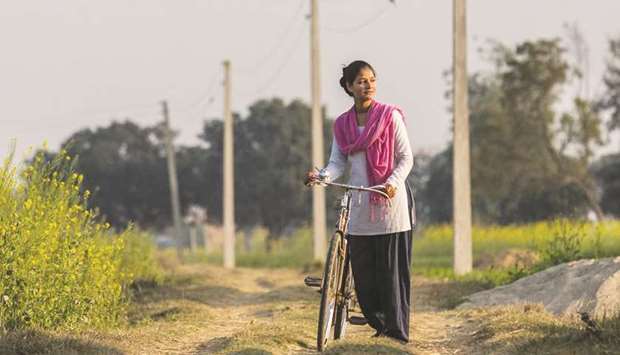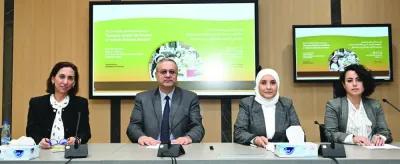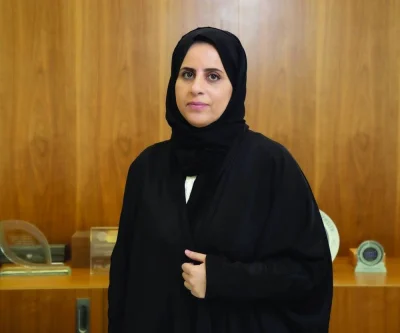It’s been more than a decade since Pandey started teaching at Shree Nepal Rastriya higher secondary in Nepal’s southern district of Kapilvastu – and he’s never seen anything like it. “But of course, by this point, we know who’s responsible.”
As if on cue, 17-year-old Sheskalo Pandey lifts her gaze from her notebook and raises her hand to ask a question. She’s been awake since 4am, when she began weaving paper baskets in the dark – but she won’t let her concentration slip. “School is my whole life,” she tells me later. “I’m working so hard to be here.”
Three years ago, just after Sheskalo’s 14th birthday, her parents decided it was time she got married. “Two of the girls I walked to school with had dropped out of our class to get married, and my family decided I should probably leave too,” she recalls. “They said that it was expensive – and that walking in on my own was too dangerous. I think they thought I’d be happy because I could plan a wedding instead.”
To her parents’ dismay, the teenager reacted by bursting into tears and refusing to eat for four days. “Even when my mother brought me a bowl of homemade curd – which we never have because it’s so expensive – I left it on the ground. I felt sick, like my whole future was being taken away from me.”
Then Sheskalo remembered a group of elderly women she’d seen making handicrafts and selling them at wedding fairs. This could be one answer, she thought, and came up with a business plan to sell handcrafted baskets, bowls, calendars and incense at markets across the district in order to enable her to pay the Rs300 ($3.30) monthly school fees.
“I begged my brother to lend me enough money to buy some coloured paper and glue,” she says. “He’s older than me, and had been allowed to finish school and go to university, so he agreed. He said he was proud of me for standing up for myself.”
With his support, their parents caved – agreeing that Sheskalo could attempt to pay her own school fees for six months. But if she failed, that was it: marriage was the only solution. Her mother nodded while Sheskalo made her business proposal, but her father remained silent. “I thought it was because he didn’t approve,” she says. “But the next day he came home with a rusty bicycle he’d spent all his savings on. He said that I could pay him back when I started making money. And that at least this way,
he knew I’d be safe.”
Her debt was repaid two weeks later, and within two months other girls in the village were asking Sheskalo for help. “I could barely leave the house without somebody stopping me,” she recalls. “Mothers were pleading with me to teach their daughters how to make money so that they could stay in school too, and my friends started telling their parents they didn’t want to get married either.”
Community workers funded by the UN Population Fund (UNFPA) caught wind of the girls’ rebellion, and began to co-ordinate a “girls only circle” where they could talk freely about their fears of forced marriage and ask for professional support to prevent it happening. Accountants were drafted in to teach them about banking and managing their money.
And when the time came to elect a group president, it was an easy choice. “There are 35 of us who have bought our own bicycles now, and we stopped two girls from getting married last month,” Sheskalo says proudly. “Next on my list is gender-based violence. We’re actually making a really big impact in a really short time.”
She now earns up to Rs8,000 ($89) for a month’s work. Half of her income goes to her father, and she saves the rest. She’s saving to do a degree in accountancy after she finishes her final exams next year. In January, she began a course in computing.
“I’d never even seen a laptop before,” she says. “My instructor says I have potential, but sometimes he still has to hold my fingers down because they keep slipping off the keys – I’m not really sure how to keep them still.”
“It’s not complicated why girls are made to drop out of school,” she says. “It’s just about money. People don’t have enough food to eat three times a day, so if you have a daughter, you’re going to want to find her a husband as soon as possible because that means you won’t have to feed her any more.”
Despite a legal age limit of 18, 41% of girls in Nepal are married before reaching that age – through secret ceremonies conducted in rural regions, or local police reportedly bribed to stay quiet. In Kapilvastu, an agricultural region, the figure is thought to be almost double that.
“Nepal is seeing slow but steady movements in the right direction, and the government has developed a sound strategy for ending child marriage,” says Lubna Baqi, the UNFPA’s Nepal representative. “However, there is a lot left to be done. Keeping girls in school is key to mitigating child marriage. Empowering girls with knowledge – and the confidence which comes with it – is key.”
Ending child marriage is one of the key targets for the sustainable development goals, and there is slow global progress
being made.
With that in mind, as the morning’s classes come to an end at 11am, Sheskalo is one of the first out the door – wheeling her bike towards the gate in a rush. “I love school, but there’s too much to do to hang around,” she says. “I mean, some of us have businesses to run.”



